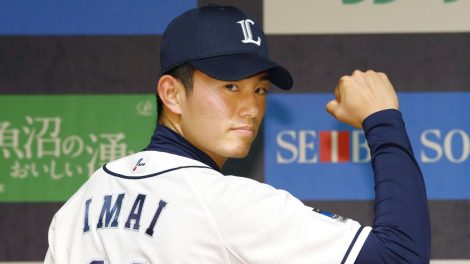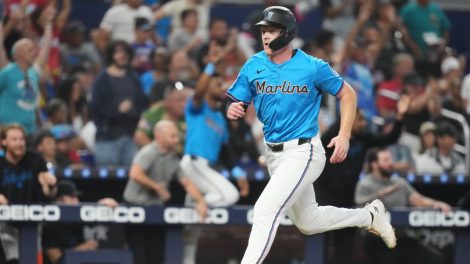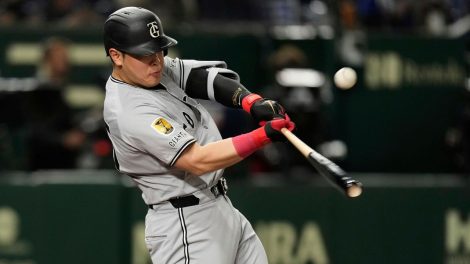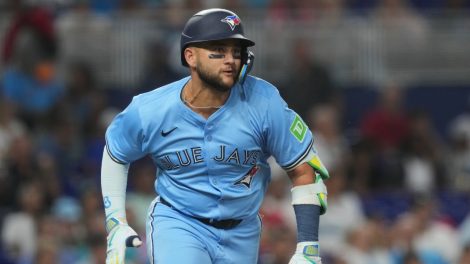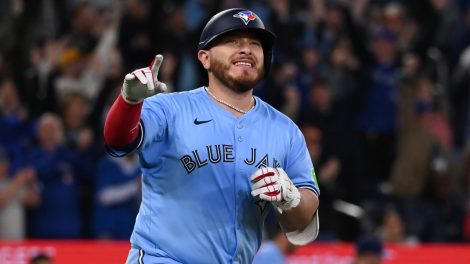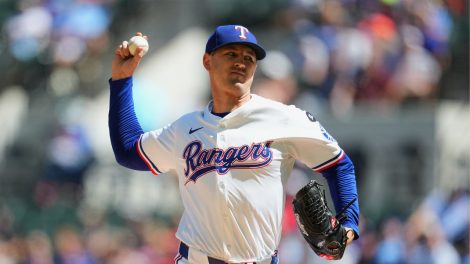TORONTO – In the moments after the Toronto Blue Jays beat the Texas Rangers 3-0 on Tuesday night, Charlie Montoyo stopped by Justin Smoak’s locker and the two had a conversation. Hours earlier, Rowdy Tellez had been recalled from triple-A Buffalo and during his daily pre-game briefing with reporters, the manager had said, "Rowdy’s probably going to play more than Smoak, if I have to guess right now." The apparent cut into his playing time caught the veteran first baseman off guard, as to that point he had heard no such thing. Air needed to be cleared.
"He said it kind of came out the wrong way, maybe. That’s how it was explained to me," Smoak said in an interview Wednesday. "We talked a little bit and I was told I’m still going to play a lot. It’s not like I’m losing time, it’s more like the beginning of the year when I’d DH and Rowdy would play first, or I’d play first and Rowdy would DH, whatever it was. It’s going to be more of that, I would expect, than anything. That’s what I’ve been told. I don’t feel it’s going to more of an automatic reduction of playing time. At least I hope that’s not the case."
Montoyo echoed Smoak’s view on playing time, saying he envisaged dispersing at-bats to the 32-year-old slugger and Tellez "more or less like when they were here together at the beginning, splitting time DHing and playing first."
"I said I want to see Rowdy a lot, because I do, I want to see what kind of adjustment he made," Montoyo continued. "Maybe it came out like he’s going to play more than Smoak, but it’s still the same way. Smoak will DH, play first. I don’t see that much of a difference."
[snippet id=4722869]
Continuing to play Smoak is the right thing to do, and clarity here matters, for a number of reasons, first and foremost to avoid the type of awkwardness that ultimately led to this week’s parting with Freddy Galvis, who was claimed on waivers by the Cincinnati Reds.
As the longest-tenured Blue Jays player, a loyal and important professional on and off the field over the past 4½ years, and someone who this season played through neck tightness in April and hobbled on a bad quad for a month until finally hitting the injured list in June, Smoak has certainly earned the right to definitively know where he stands.
If the Blue Jays intend to keep him around for the rest of the season – and at this point they seem to have no intention of running him through waivers the way they did with Galvis – they need to give him regular at-bats, not simply leave him idling as the last adult in the room. (There are only two other 30 year olds on the roster, Buddy Boshers and Neil Ramirez, who are barely on this team.)
Factor in his pending free agency and a sudden cut in playing time this late in the season is grossly unfair. Smoak gladly accepted the veteran/mentor role foisted upon him by the rebuild, and at this point deserves a chance to set up his next contract if the oft floated prospect of an extension isn’t going to materialize.
The challenge for Montoyo, then, is to find Smoak at-bats while simultaneously test driving Tellez, Billy McKinney, Brandon Drury and others who’ll eventually find their way up to the Blue Jays, Jonathan Davis and Anthony Alford among them. There will be more pressure in that regard once Lourdes Gurriel Jr. returns from the injured list, too.
[relatedlinks]
Still, Smoak brings an element to the table that the others don’t, namely the more than 4,500 plate appearances accumulated during a decade in the big leagues and the wisdom accrued over that span.
"There’s definitely a veteran presence that’s needed – stuff can change quickly if you don’t have a veteran presence," said Smoak. "And not just a veteran presence in the clubhouse, you’ve got to have a veteran everyday player. It was great when it was me and Freddy because the Latin guys could go to him and the other guys could come to me. I told the Latins the other day after Freddy left, ‘Hey, we got a translator if you need something.’ But more than anything, you need a veteran guy that’s playing every day to have somewhat that balance, if it’s batting second or batting eighth. Yeah, they’re really good players, but there are going to be tough times, it’s not just going to be easy, and they have to have someone to lean on. I feel like you have to have that guy there."
By his own admission, Smoak hasn’t enjoyed the type of raw production expected of him, with 19 homers and a .212/.352/.412 batting line in 409 plate appearances. The injuries he’s played through may factor into that, even if he won’t accept the excuse, but he points out "that by a lot of the analytic stats they go by these days, I might be good at those."
Indeed he is, as his exit velocity ranks in the 73rd percentile, while two other quality-of-contact measures also bode well, as his expected weighted on-base average is in the 91st percentile while his expected slugging percentage is in the 84th percentile. His 16.6 walk per cent rate is in the top two per cent of baseball.
[snippet id=3305549]
"It’s been one of those years where I feel like I’ve done things either better or the same as I have in past years," said Smoak, "and just really haven’t a lot to show for it."
The value of his other contributions aren’t as easily measured, but as attrition and the trade deadline have stripped away veteran after veteran, Smoak’s presence has slowly grown in importance. Once July 31 passed, it was down to him and Galvis. Now, just him.
"Freddy gave me a heads up the day before (he was claimed) saying there was a chance it could happen, so I expected it. Who doesn’t want a guy having the best year of his career playing every day shortstop? Someone’s going to grab him," said Smoak. "It was great at the time having a veteran Latin guy, and a guy like myself. With Freddy, too, you knew what you were going to get every day. He was going to show up to play and you have to have that presence. It was good to have him."
For many reasons, it’s good for the Blue Jays to have Smoak, too.

